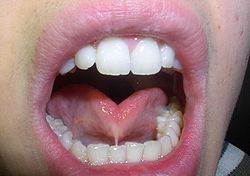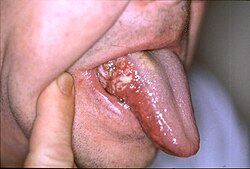| Tongue disease | |
|---|---|
 | |
| A picture of black hairy tongue, a non-serious tongue disease. | |
| Specialty | Gastroenterology |
Tongue diseases can be congenital or acquired, and are multiple in number. Considered according to a surgical sieve, some example conditions which can involve the tongue are discussed below. Glossitis is a general term for tongue inflammation, which can have various etiologies, e.g. infection.



